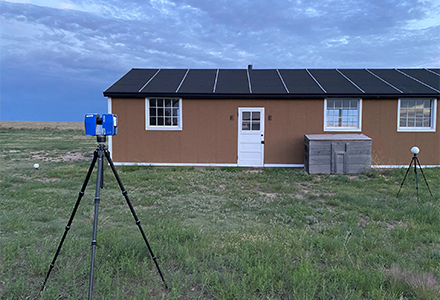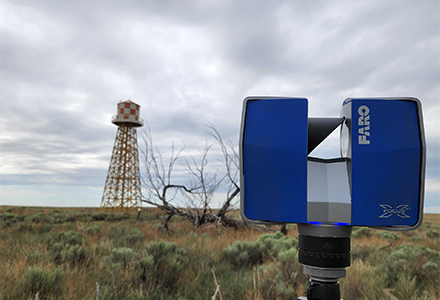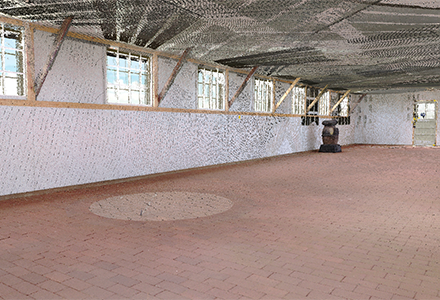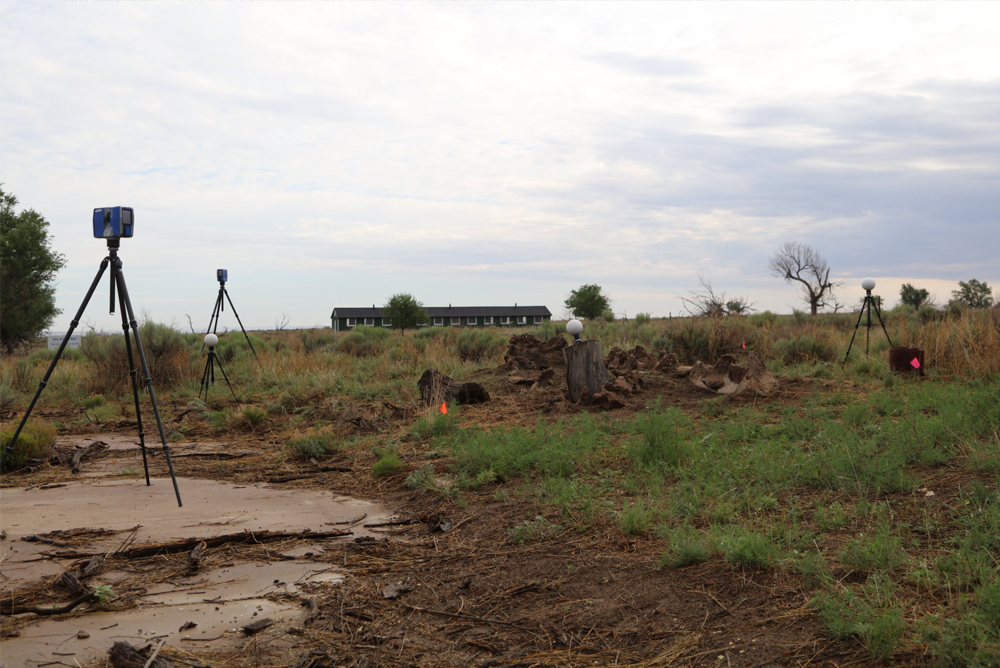The Granada War Relocation Center – also known as the Amache Camp – was one of ten Japanese-American internment camps that opened across the United States in 1942 as a response to the Pearl Harbor bombing. It was built one mile southwest of the town of Granada, and the area designated to house internees spanned one square mile. Internees were only allowed to bring one suitcase per person. Anything that couldn’t fit in the suitcase was left behind.

From the day the camp opened on August 27, 1942, to the day it closed on October 15, 1945, around 10,000 different people of Japanese descent were forced to relocate from their homes along the West Coast and live within the Amache Camp. Within those three years, those interred at the camp worked to renovate the camp in their own ways, transforming it from a prison into a home. From building gardens, forming their own high school sports team, creating their own furniture on-site, and so much more, those that were interred at the Amache Camp were determined to make sure that their sense of community was not lost. When the camp closed, people were told to leave in the same way they had been ordered to arrive – by packing their belongings into their single suitcase and leaving behind anything else. The camp was torn down soon after, leaving only cement foundations and dirt roads.
The Amache Camp was left to be forgotten but forgetting a history like this is easier said than done. Today, there are yearly pilgrimages to each internment camp, led by former internees and internee descendants. In Granada, there is a local museum dedicated to the Amache Site and its legacy that is open year-round to visitors. The history of the Amache Camp, and in turn of all the internment camps, is one that fights to remain heard.

To contribute to keeping alive the memories of what happened at the Amache Camp, which recently become part of the National Park System, University of South Florida Institute for Digital Exploration (IDEx) staff members and History graduate students Kylie Dillinger and Angela Costello traveled to the site during the summer of 2022 with a singular goal in mind: to tell the story of the daily life of the internees and to make this story more accessible to the public.
Over the course of a week, various artifacts and features of the Amache Camp were 3D digitized using cutting-edge technologies. Some of these artifacts included objects made or used by the detainees, which are currently housed at the Amache museum. These items include furniture made on site, articles of clothing that were worn, and suitcases that would’ve held the belongings of internees as they arrived and left. These pieces will become a part of a digital online collection that will be available for public viewing.
By creating a digital space to tell the story of the Amache Camp, the reach of its story is no longer constricted by the need to physically go to the site or go to the museum. Instead, anyone in the world can view this collection, and in turn, anyone in the world can learn directly about the history of the Amache Camp through these historic pieces.

The second major goal of this project was to capture the entirety of a block where internees had resided in. Today, all that is left at the physical site is the overgrowth of brush and the cement foundations of where structures used to be. However, by 3D scanning the entire living block, members of the IDEx team can digitally rebuild this section of the Amache Camp to how it looked on the day internees began arriving, as well as illustrate how the internees changed the site so that it felt more like a community – more like a home. With this, the IDEx team hopes to tell the story of Amache through a recreated timelapse – highlighting its immense change throughout the years. Once this part of the project is complete, it will also be made available to see online.
Nothing will ever be able to replace the experience of stepping foot on the site in person or hearing the story firsthand from former internees and their descendants, but by bringing these pieces of the camp’s history into the digital world, and being able to visually tell the story of the site, one can hope that the memories of what happened at the Amache Camp can reach out beyond the borders of its physical place.
By ensuring this story is never forgotten, one can hope that it is never repeated.
